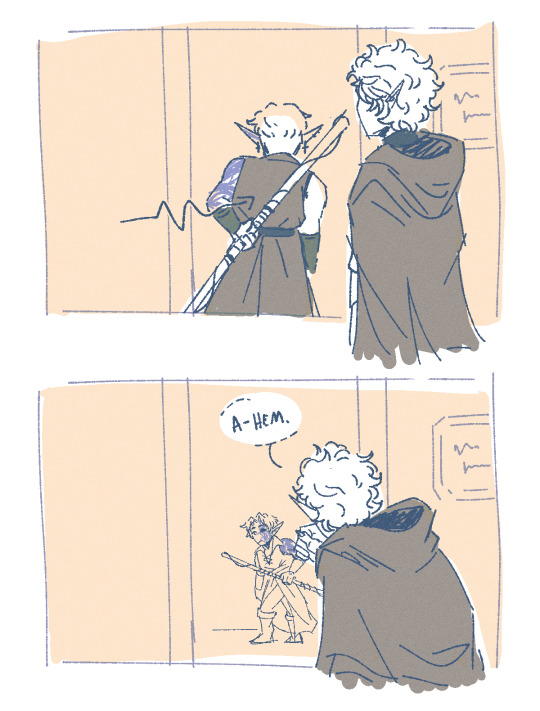#rule of 3
Photo

Celebrity death rule of threes
It’s one of the oldest superstitions in pop culture. The notion that movie stars and celebs always die in groups of three. And it does happen from time to time. Like when fashion designer Kate Spade, television chef Anthony Bourdain, and actor Jackson Odell all passed away within a matter of days? Spade and Bourdain died by suicide, and Odell was found unresponsive in a sober living home.
In 2014, after the passing of Robin Williams and Lauren Bacall, the world held its breath. Who would be the third celebrity to die? As people waited for the other shoe to drop, they relied on anecdotal evidence from the past to justify their macabre anticipation.
After all, we can think of at least ten instances when celebrities have died in threes. They include the “Summer of Death” in 2009 when the world lost three pop icons back to back, Ed McMahon, Farrah Fawcett, and Michael Jackson.
And no one can forget the deaths of rock legend David Bowie, actor Alan Rickman, and René Angélil, husband and manager of Celine Dion, in 2016. Add to this, Alan Thicke, George Michael, and Carrie Fisher, and it has to be more than coincidence. Right?
33 notes
·
View notes
Text
Me when I smush my face into the wall

55K notes
·
View notes
Text

51K notes
·
View notes
Text

#catposting#shitpost#196#:3#rule#sillyposting#ruleposting#silly cats#cats of tumblr#cute cats#black cat#cats
41K notes
·
View notes
Text
Foreplay with a robot girl where I slowly keep removing RAM from her while she’s still trying to tell me about the things she’s into
#mine#t4t#t4t nsft#trans t4t#robot girl#aikin#robokin#robogirl#lgbt nsft#queer nsft#autistic nsft#trans nsft#transfem#transgirl#trans#transgender#196#r/196#rule#:3#hornyposting#bottomposting#sillyposting#lgbtq community#mtf nsft#wlw nsft#t4t wlw#wlw yearning
24K notes
·
View notes
Text
You better not be up making that sinister potion
Me asf:


26K notes
·
View notes
Text



workarounds to having a vampire as your partner in crime
#baldur's gate 3#bg3#astarion#néphos#bg3 tav#doodles#néphos used to do crimes for profit pre-game so i like to think that post-game they recruit astarion into it#dnd rules say ''can't enter a residence without an invitation from one of the occupants''#technically. if you squint. someone who's inside the building is an occupant. Break-ins for murder may continue
16K notes
·
View notes
Text
Photography
Elements of Design
Line
Definition: The path of a moving point is a mark made by a tool or instrument as it is drawn across a surface.
Types: Vertical, Horizontal, Curved, ZigZag, Diagonal
Notable Example: "The Eiffel Tower" by Henri Cartier-Bresson - showcasing elegant vertical lines.
Shape
Definition: The area stands out from the shape next to or around it because of a defined boundary or because of value, color, or texture.
Notable Example: "Migrant Mother" by Dorothea Lange - illustrating the emotional impact of the human shape within its surroundings.
Color
Definition: A visual sensation caused by light.
Notable Example: "Afghan Girl" by Steve McCurry - using vibrant color to convey the subject's striking gaze.
Components: Hue, Value, Intensity
Hue refers to the pure, basic colors of the color wheel. It is what distinguishes one color from another, such as red, blue, or yellow.
Example: In a rainbow, each band of color represents a different hue.
Value represents the lightness or darkness of a color. It is determined by the amount of light reflected by a color. A range of values creates contrast and depth in an image.
Example: In a grayscale image, the variations from black to white represent different values of gray.
Intensity, also known as saturation, refers to the purity or vividness of a color. A highly saturated color is pure and vibrant, while a desaturated color is more muted or grayish.
Example: A highly saturated red will be bright and vibrant, while a desaturated red will appear more subdued.
Space
Definition: The area occupied by form. The main area is positive, everything else is negative.
Notable Example: "Moonrise, Hernandez, New Mexico" by Ansel Adams - masterfully using negative space to emphasize the moonrise.
Value
Definition: How light or dark a given color or hue can be.
Notable Example: "The Old Guitarist" by Pablo Picasso (photographed by André Villers) - utilizing value to evoke emotion in a monochromatic context.
Form
Definition: Where light and shape collide to create images with depth and a sense of touchability.
Notable Example: "Nude Descending a Staircase, No. 2" by Marcel Duchamp (photographed by Man Ray) - playing with form and movement in a surreal way.
Texture
Definition: The visual depiction of variations in the color, shape, and depth of an object's surface.
Notable Example: "Migrant Mother" by Dorothea Lange - highlighting the weathered texture of the subject's face and hands.
Practice:
Take 5 photos demonstrating lines or explore more variations.
Principles
Balance
Definition: Feeling of equality in weight.
Types: Symmetrical, Asymmetrical, Radial
Notable Example: "The Birth of Venus" by Sandro Botticelli - showcasing symmetrical balance in a classic painting.
Proportion
Definition: Deals with the ratio of one part to another. Ratio implies comparison and is expressed in size, number, position, and space.
Notable Example: "Vitruvian Man" by Leonardo da Vinci - exploring the proportions of the human body in a meticulous drawing.
Harmony
Definition: Creates unity by stressing the similarities of separate but related parts.
Notable Example: "Starry Night" by Vincent van Gogh - achieving harmony through the use of color and swirling patterns.
Variety
Definition: A change or contrast within one or more elements to add interest and to avoid monotony.
Notable Example: "Les Demoiselles d'Avignon" by Pablo Picasso - introducing variety through diverse and unconventional forms.
Movement
Definition: Where your eyes look in a picture.
Notable Example: "Dance at Le Moulin de la Galette" by Pierre-Auguste Renoir - capturing the lively movement of dancers in a joyful scene.
Unity
Definition: The whole or total effect of a work of art that results from the combination of all its components.
Notable Example: "Guernica" by Pablo Picasso - achieving unity in a powerful anti-war painting.
Rhythm
Definition: A continuance, a flow, or a feeling of movement achieved by the repetition of related visual units; the use of measured accents.
Notable Example: "The Dance" by Henri Matisse - creating a sense of rhythm through repeated, flowing shapes.
Emphasis
Definition: The stressing of an element to make it more interesting or important through one position, color, object, or texture.
Notable Example: "Girl with a Pearl Earring" by Johannes Vermeer - emphasizing the subject's enigmatic gaze and the play of light on the pearl.
Composition
The way the principles of art are used to organize the elements of art. It determines the movement or direction it takes your eyes around the picture. There are many types of compositions; some of them resemble an S, O, U, T, L, S, and more. Understanding composition enhances the overall impact and storytelling in your photographs.
Composition in photography refers to the arrangement and organization of visual elements within a frame to create a compelling and harmonious image. It involves making deliberate choices about how to position and combine various elements like lines, shapes, colors, and textures. A well-composed photograph not only captures the subject but also guides the viewer's eyes in a way that enhances the overall impact and storytelling of the image.
Key Aspects of Composition:
Framing:
Choosing what to include within the frame and what to leave out is crucial. The frame acts as a boundary, focusing attention on the subject.
Rule of Thirds:
Dividing the frame into a 3x3 grid and placing key elements along these lines or at their intersections can create a visually pleasing balance.
Leading Lines:
Lines within an image (like a road, river, or architectural elements) can guide the viewer's eyes toward a focal point or create a sense of movement.
Symmetry and Asymmetry:
Symmetry can create a sense of balance, while asymmetry adds visual interest. Both can be used to guide the viewer's focus.
Contrast:
Contrast in color, tone, or texture helps certain elements stand out, drawing the viewer's eyes to specific areas of the photograph.
Depth and Perspective:
Creating a sense of depth enhances the three-dimensional feel of a photograph. This can be achieved through techniques like using leading lines, overlapping elements, or varying focus.
Balance:
Achieving balance ensures that no single element dominates the composition. Balance can be symmetrical, asymmetrical, or radial, depending on the desired effect.
Guiding the Viewer's Eyes:
Visual Hierarchy:
Establish a hierarchy of importance within the image. This can be achieved through the use of size, color, or contrast to make certain elements more prominent.
Focal Point:
Clearly define a focal point to which the viewer's eyes are naturally drawn. This can be the main subject or a strategically placed element within the composition.
Leading Lines:
Utilize leading lines to guide the viewer's eyes toward the main subject or a specific area of interest within the frame.
Contrast and Color:
Use contrast and color to create emphasis. A pop of color or a high-contrast element can immediately attract attention.
Positioning and Flow:
Consider how the viewer's eyes will move across the image. Arrange elements to create a natural flow that leads the eyes from one point of interest to another.
In summary, composition is about purposefully arranging elements within the frame to create a visually pleasing and impactful image. By understanding the principles of composition, photographers can effectively guide the viewer's eyes, control the narrative, and evoke specific emotions or reactions.
Practice:
Here are three famous photographs where you can circle or draw an arrow to the focal point:
"Migrant Mother" by Dorothea Lange:
Assignment: Circle to highlight the focal point. Consider how the photographer uses the expressions and gaze to create a compelling focal point.
"Afghan Girl" by Steve McCurry:
Assignment: Circle or draw an arrow pointing to the focal point. Notice how the intense gaze creates a powerful focal point and draws the viewer into the subject's emotions.
"The Falling Soldier" by Robert Capa:
Assignment: Draw an arrow pointing to the focal point. Reflect on how this focal point captures a decisive moment in the chaos of war, conveying both action and vulnerability.
For each photograph, consider the composition techniques that contribute to the effectiveness of the focal point. Pay attention to factors like framing, contrast, and the placement of elements within the frame. This exercise can help enhance your understanding of how photographers use focal points to guide and engage the viewer.
#photography notes#notes#class notes#photo#photography#elements of design#composition#focal point#guiding lines#photos#rule of 3#color#shape#line#texture#homework#class#practice#artist
0 notes
Text

We on that evil shit now
21K notes
·
View notes
Text

Unfathomably based way to use AI.
Edit: ok, Im new to this whole Tumblr thing (Reddit refugee), how do you cope with all the notifications and attention when your post blows up ? (Do you even use "edit:" here?)
20K notes
·
View notes
Text

13K notes
·
View notes
Text

13K notes
·
View notes
Text

10K notes
·
View notes


